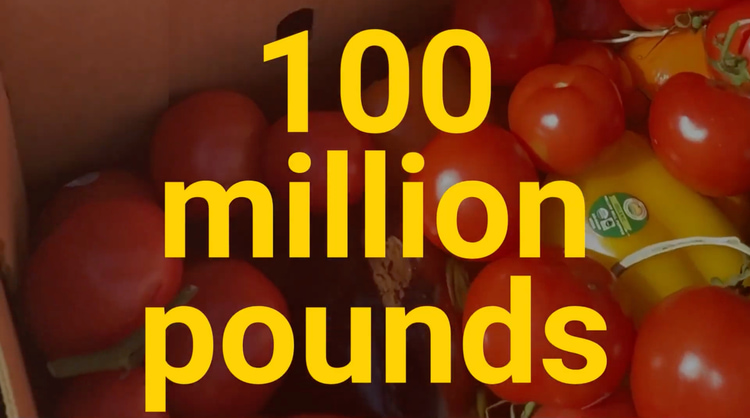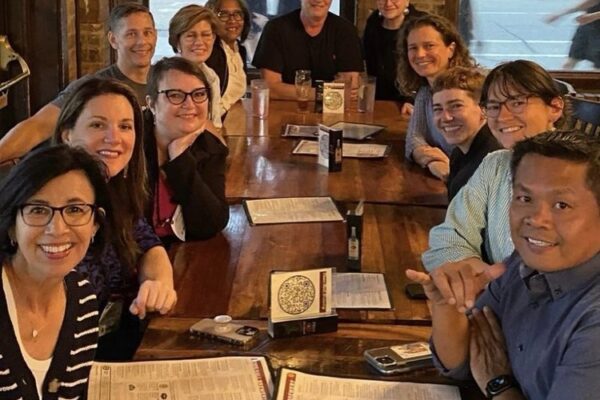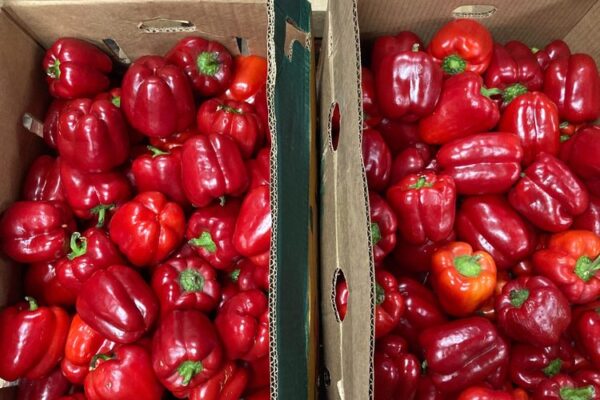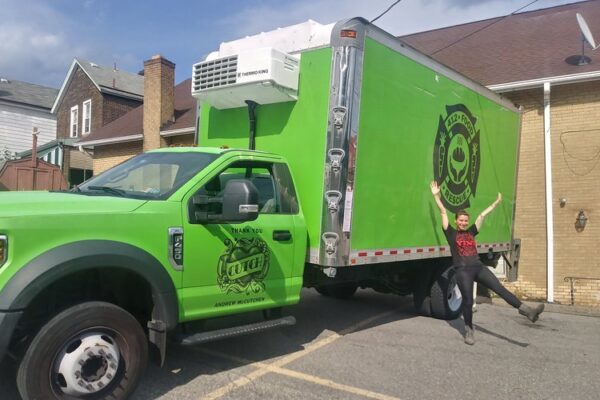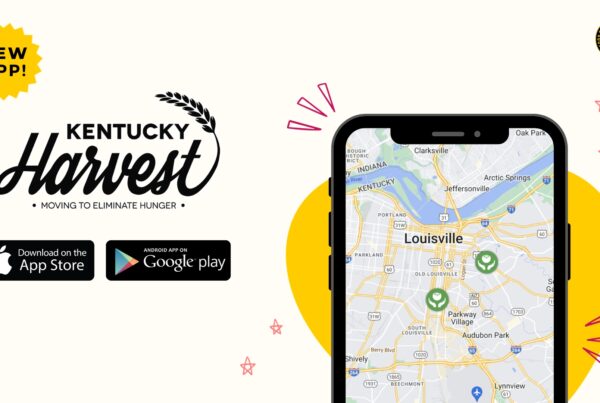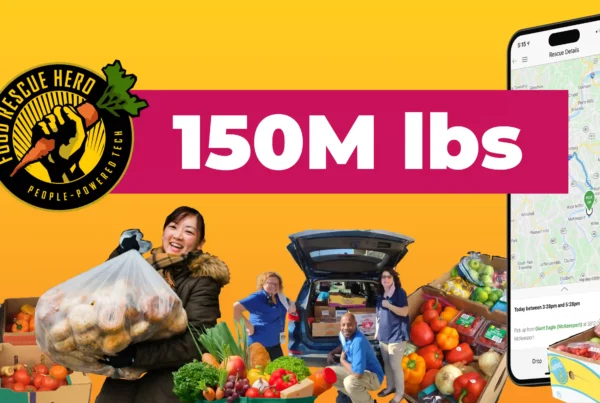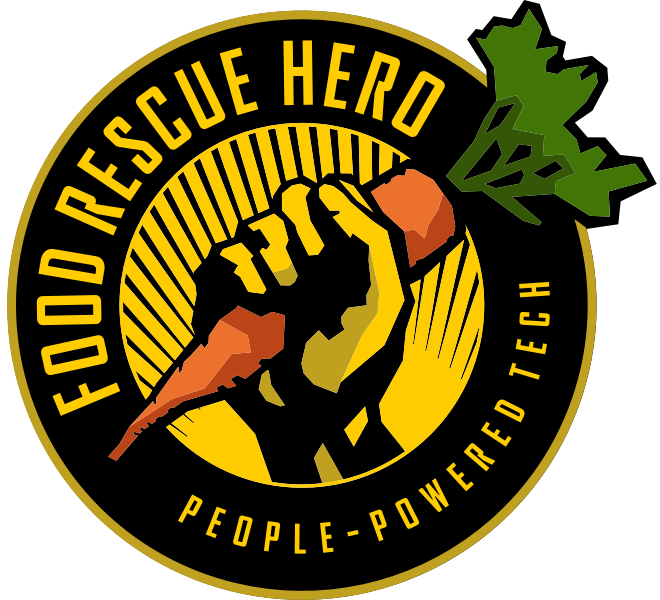The Food Rescue Hero Network is celebrating 100 MILLION POUNDS OF FOOD RECOVERED!
That’s equivalent to half the weight of the Great Pacific Garbage Patch – 10,000 elephants – or the entire Titanic!
To food recovery organizations all over the country, recovering 100 million pounds is a really big deal. Because starting a food rescue isn’t easy. It’s wrought with an incredible amount of high touch, detail-oriented coordination and interaction:
-
Researching potential food donors and non-profit partners, their unique pain points and needs
-
Building relationships with like-minded community members interested in aligning to make an impact on huge, unwieldy issues like hunger, food waste, climate change and ultimately access to nutritional food
-
Securing funding and team building
-
Detailed reporting of food donations & deliveries (e.g., type, size, weight, time of pick up, time of drop off, confirmation of receipt)
At the center of all of this activity emerged the most pivotal piece of our food recovery solution: transportation. Since 87% of surplus food is fresh and perishable, timely pick up to drop off is essential.
That’s where our unique direct distribution model using our beloved volunteers creates real impact.
Food Rescue Hero was founded on a simple belief that people are wired for good. People want to pitch in; help each other out; make a difference in their community. They just aren’t sure of HOW to start their journey. Our team wagered that if we could coordinate food rescue pick ups near locations people visit every day, and then pair them with non-profit partners close by, we might be able to create food rescue routes that would fit into a variety of everyday people’s routines. It took an incredible amount of time. But we proved ourselves right; within our first year of operation, 412 Food Rescue recruited around 100 people to volunteer, and recovered 86,000 pounds of food.
After that year, we aimed to retire our reams of spreadsheets, email lists and phone numbers by creating an app that leveraged human-centered design, making volunteering easy, richly rewarding and incredibly convenient. We knew that if we provided an elegant tech experience, with thorough, easy to understand step-by-step guidance, that we would have the potential to get volunteers to claim food rescues regularly.
Not only did our volunteers prove us right – they knocked our goals out of the park. We launched the Food Rescue Hero app in November of 2016 and reached 1 million pounds of food recovered by December 2016. The following year, our 500 volunteers (Food Rescue Heroes as we call them) had recovered 2 million pounds of fresh, nutritious food donated by over 190 food donation partners. We knew we were onto something special.
But, with the variable food recovery dynamic comes a lot of surprises. Sometimes a food donor shows up with double the donation expected. And some days that same donor may not have anything. It’s a day-to-day, ever-changing reality. Like how one day our team found ourselves unable to place an incredibly large donation of cucumbers. We reached out to our partners and placed many of them, but couldn’t place them all. We started thinking, “did we just solve hunger?”
We quickly realized that what we actually identified was a multi-layered problem to address: there were people experiencing food insecurity that did not qualify for traditional models of support, or who lived outside the service area for various programs, or somehow fell through the cracks of traditional food distribution. So we set our sights on finding new ways to directly reach individuals experiencing food insecurity, meeting them where they already were in their daily lives.
In partnership with the Housing Authority of the City of Pittsburgh (HACP), 412 Food Rescue created an innovative grocery and prepared meal delivery service to residential housing areas where convenient food access did not exist. Our partners at the HACP reported receiving urgent phone calls for food every day, and welcomed this pilot.
Within a few months of the pilot, HACP shared some pretty remarkable news: the emergency phone calls for food had stopped.
Accelerated by the COVID-19 pandemic, we also piloted our Home Delivery feature, to directly reach community members who were the most vulnerable to COVID-19. In Pittsburgh and Prince William County, Virginia, Food Rescue Heroes delivered 300,000 meals directly to the doorsteps of people experiencing food insecurity. This functionality is now available for all members of the Food Rescue Hero Network.
Between the incredible tech resources, the innovation-centric philanthropy community, and the generous spirit of people, our pilot city has welcomed our innovation with open arms. In Pittsburgh alone, 20,000 registered Food Rescue Heroes get notifications about available food rescues every day. Nationwide, we’ve grown this community to over 35,000. In total, these volunteer drivers have recovered 100 million pounds of food and delivered it to people who need it, delivering at a 99% service level (higher than some commercial services) and keeping these valuable resources out of landfill.
What we have created is a beautiful, interdisciplinary food recovery ecosystem. It is revolutionary. It is working. It is what happens when we design social services with the people we seek to serve at its center. It is what happens when we unequivocally believe in everyone’s desire to be there for others. Its potential is unmatched.
As of July 2022, we’re celebrating 100M pounds of food recovery.
Next up? We’re bringing our Food Rescue Hero Network to Pittsburgh to gather for the first time in one location collaborate on ideas to bring this movement to 100 cities by the year 2030, in line with the UN’s Sustainable Development Goals. When we meet this goal, we will have over one million Food Rescue Heroes showing up to change how food gets to people in their communities. By 2030, we will have rescued nearly 3 billion pounds of food. With the power of this many people, we will mitigate millions of pounds of carbon emissions, reversing climate change while feeding people. That is the power of using technology for good. In 2021, this world-changing idea from Pittsburgh fed one million people across North America. By 2030 we aim to feed billions.
The ability to deliver food directly to households in need and to set up recurring rescues places our technology on par with commercial food delivery apps. Our detailed data management and reporting tools make it easy for food rescue organizations across the country to onboard new food donors, especially in light of new food waste regulations such as California’s SB 1383.


